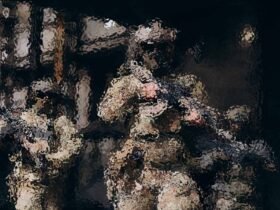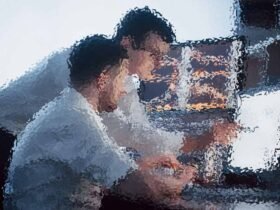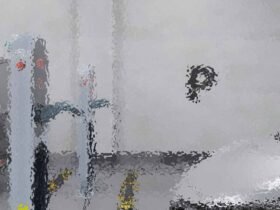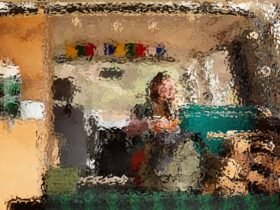The aim of this sub topic is to help students to express various locations of important places. As we live in our community, there are some locations that we need to know ourselves and for the benefit of the visitors.
We can also travel and arrive in some locations where we can also need some directions on the places we are not familiar with. This sub topic will help students from locating small or local locations to the locating other important places in town, country, and in the world.
ACTIVITY 1:
BRAINSTORMING
Here a teacher leads a discussion on brainstorming about the key concepts of a sub topic. For example what is a location? Location is the place, site or position of something. Students are introduced to this sub topic by explaining to them various sites they know and other sites they do not know. These sites or locations can be located by using special expressions and by using the points of the campus as well.
Patterns/structures:
Where is the school library?
The school library is located in front of…..
Where is the assembly hall?
The assembly hall is located adjacent to……
Vocabulary/phrases:
ACTIVITY 2:
LOCATING PLACES IN A CLASS.
In this activity, a teacher guides students to express location of different objects/people (or other students) in the class. This is the simple and familiar place for the students to locate various objects within a particular location.
A teacher can guide student to locate various places in the class. S
Here are some guiding questions and some of their responses:
Where is John’s desk?
John’s desk is behind my desk.
Where is Blackboard?
Our blackboard is in front of our class. Or Our board is in the north side of our class.
Where is teacher’s table?
Where is my school bag?
Your school bag is under your desk.
ACTIVITY 3:
LOCATING PLACES OF THE SCHOOL.
At this stage, a teacher guides students to express location of different important places in school. This is a bit broader level because students will have to relate and locate various objects around the school compound. The students are guided to use various school locations like dormitory, toilets, administration block, canteen, dining hall, school garden, playground/football/netball/volley ball pitches, classrooms, school library, parade/assembly hall, smart area, teachers’ houses, etc.
Guide students to form pairs or groups and brainstorm with them the following words to understand their meaning and their functions. This brainstorming is done in their groups.
After the discussion, tell them that you are going to ask them questions and each group should discuss the right response and present it. now ask them the following questions in which each group will have to respond:
Where is dining hall?
Where is school shop?
Where is the school library?
The school library is located in front of…..
Where is the assembly hall?
As they try to attempt these questions and discuss their correct responses, a teacher can now discuss with them the appropriate prepositions to use when responding to such questions on locating places. The most common prepositions used are:
Adjacent, beside, near, behind, in front of, opposite to, to the east, to the west, on top of the mountain, and close to.
For example, some questions above can have the following responses:
Where is the dining hall?
The dining hall is behind Form Two class.
Where is the playground?
The playground is to the east of the classes.
Where is the library?
The library is opposite to the school administration block.
Where is the boys’ dormitory?
The boys’ dormitory is adjacent to school garden.
ACTIVITY 4:
LOCATING PLACES IN A VILLAGE, TOWN, CITY OR COUNTRY.
Now, the teacher guide students to express location of different important places in the village, town, city or country using a map of Tanzania. Almost every school is located near the village, street, town or city or they are at the centres of various cities where they are adjacent to other buildings in the particular area.
A map like Map of Tanzania can used. If there is any local map like District map, it can also be applied in this activity. The aim is to familiarise students with the knowledge of locating different places.
Now, since the students have the knowledge of locating various places in the classroom and at around the school compound, the teacher can take them to the next level. This is all about locating the important places of their district, region, and a country in general. A teacher can use any available map or maps for the students to use or some maps can be drawn or even use the maps that have been drawn already. Check the following maps. These maps can be used to ask students various questions on locating various important places in Katavi Region and for the country:
KATAVI NATIONAL PARK AND EXTENSION MAP:

Questions:
(From Point A in a red circle):
Where is the Mirumba?
Where is Maji Moto?
Where is Rukwa Game Reserve?
Where is Usevya Open Area?
Where is Stalike?
UNITED REPUBLIC OF TANZANIA

Questions:
(From Point A in a red circle):
Where is Dodoma?
Where is Lake Nyasa?
Where is Dar es Salaam?
Where is Burundi?
Where is Zanzibar?
GRAMMAR PRACTICE:
Form and Function of the sub topic:
This sub topic requires student to have a good mastery of prepositions and prepositions of place in particular. The understanding of this sub topic will be effective when students were interactively engaged in the previous topics in Form One class. Perhaps, there may be varied level of topics coverage for each class and school, but when a teacher notices that students have no basic foundation in this, then it is a teacher’s duty to make sure students are interactively taught with more activities.
NOTE:
This sub topic is well taught with the use of real objects and real environments. For example, a teacher should not teach this sub topic entirely locked in the class. The important places are not only found in the classes. The students should at least be take out and let them see what they can locate. Taking students out does not only make the lesson easy but also it is a king of motivation. Some students who have been in the class, they will understand more when they are taken out.
The important terminologies used
- In front
- Around
- Behind
- Close to
- Adjacent to
- The left hand
- Never
- The right hand
- Beside
- North
- Opposite to
- South
- A long
- West
- Across
- Where is the dining hall?
The dinning is
-In the left of our class
-Adjacent to the boys’ dormitory
-Western side of the basket count
-Close to the water resource
-Beside the kitchen
-Opposite the boys dormitory
Where is the church
The church is
-Is the eastern side of our class
-Is beside the school gate
-Is behind the car park
-Adjacent to the Goba road
TAG QUESTIONS
An affirmative statement take a negative question tag
a) They are doing their homework. Aren’t they?
b) I am going now. Aren’t i?
c) John goes to school. Doesn’t he?
d) Children went home late yesterday. Didn’t they?
e) You should go soon. Shouldn’t you?
A negative statement take a positive question tag
a) She is not going to school. Is she?
b) He won’t play tomorrow. Will he?
c) Doctors did not demonstrate last week. Did they?
d) Will she come earl? She won’t?
If you ask a question in which you expect Yes answer they question tag will be negative
a) You like trouble don’t you?
b) You are a student aren’t you?
c) She studied had. Didn’t she?
d) Will she come early? She won’t?
If you expect the answer to the question tag becomes positive
a) You are not Mruma?are you?
b) You are not soldiers. Are you?
c) He is not a thief. Is he?
We can change a story command into request form by addition of infirmity.
a) Shut up! will you?
b) Lets us move now, shall we?
c) Open the window, will you?
d) Comes here, will you?
e) Stand up, will you?
Suppose you have met a guest at Mwenge Bus stop tell him / her the way to go ST. Joseph Sec School
Go along the Bagamoyo
Turn left to kawe Road
Pass through NTUWEMA ST
Then on your left hand side to TANGANYIKA PACKERS















Thanks for one’s marvelous posting! I really enjoyed
reading it, you’re a great author. I will be sure to bookmark your blog and
definitely will come back someday. I want to encourage yourself to continue your great posts, have
a nice afternoon!
After looking at a few of the blog articles on your website,
I truly appreciate your technique of blogging.
I book marked it to my bookmark webpage list and will be checking back in the near future.
Take a look at my web site too and let me know what you think.
What a information of un-ambiguity and preserveness of precious familiarity about unexpected emotions.
Write more, thats all I have to say. Literally, it seems as though you
relied on the video to make your point. You obviously know what youre talking about,
why throw away your intelligence on just posting videos to your blog when you
could be giving us something enlightening to read?
I used to be suggested this website via my cousin. I’m now not sure whether this publish is written by way of him
as nobody else know such targeted about my trouble. You’re incredible!
Thanks!
Good way of telling, and pleasant article to obtain data about
my presentation subject matter, which i am going to present
in academy. 0mniartist asmr
Right here is the perfect web site for anybody who would like to find out about this
topic. You know a whole lot its almost tough to argue with you (not that
I actually will need to…HaHa). You definitely
put a fresh spin on a topic that’s been written about for many years.
Wonderful stuff, just excellent! asmr 0mniartist
I visited many websites but the audio feature for audio
songs existing at this website is truly excellent. asmr 0mniartist
Thanks for sharing your thoughts about 0mniartist. Regards 0mniartist asmr
Someone necessarily assist to make severely posts I would state.
This is the very first time I frequented your website page and thus far?
I surprised with the analysis you made to create this
actual submit amazing. Great job! asmr 0mniartist